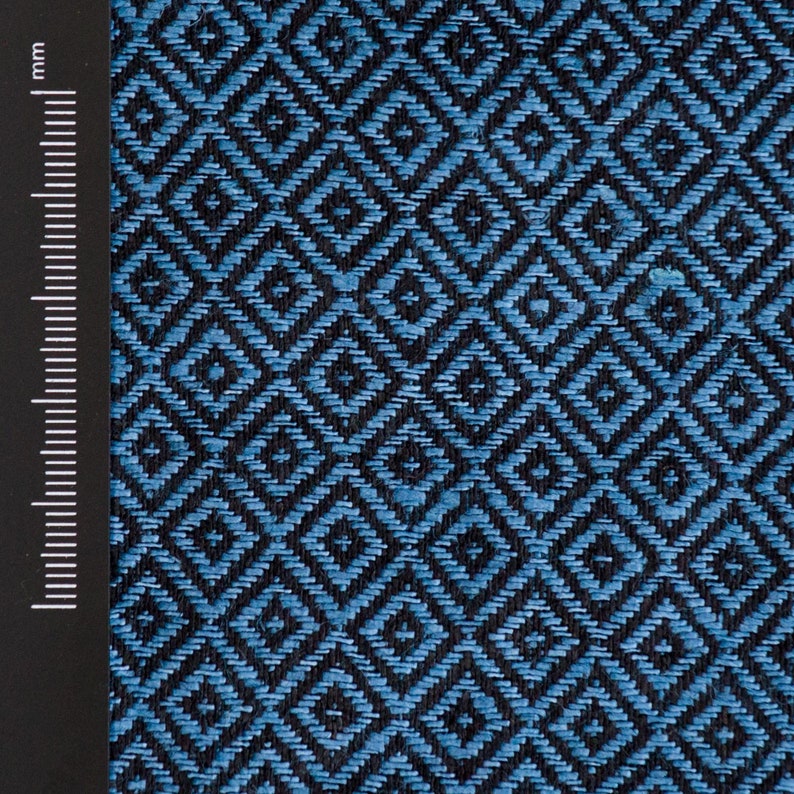Up Next: Diamond Twill. These are samples from a Scandinavian supplier (no longer available).
The spa towels are weaving up fast! I am half-way through the 3rd towel. I will probably finish the weaving on ti next weekend. Then it's the finish work: hemming, splicing, wet-finishing. I can't wait to see what it looks like after it's washed and fulled.
So the next project: Recovering my Loom Stool with a Diamond Twill.
I searched through my stash looking for a piece of tapestry fabric that has been with me for a very long time -- at least since the 1990s. Blue and green diamond twill that I was saving to make a vest or bodice for SCA period dresses. A few months ago, I must have purged it in effort to make more room for other things. And of course, as soon as it's gone is when I find a use for it ...
I am old enough that I have and remember things that are no longer available in commerce. Since I no longer had it, I was hoping it might be available for purchase, but the only thing remotely like it and made of natural fibers (NOT polyester) ... I found something that might work ...
The black and blue sample above is available on etsy in linen from a shop in Poland that weaves cloth for historical re-enacters (SCA, Celtic, Viking, etc.) I could buy it for about the same price I could order the materials and make it myself. I kind of want the satisfaction of making a diamond twill in green (I am not so interested in historical accuracy as far as proper dyed colors, though I do appreciate the long history this design has ...) They also sell diamond twill blankets in wool, that can also be used as a cloak. That would also be nice to have -- and again, I could purchase one for just about the same price the materials would cost. I have to remember that weaving is a hobby for me -- then there's the entertainment factor, too.
My next thought was: Well, why don't you MAKE it? You have the means of production. That diamond twill pattern is pretty common, and entirely possible on my 4-shaft loom. I found a few examples of people weaving diamond twill yardage -- usually for historical period re-enactors: This one is blue on blue and this one where he actually dyed the yarn with a traditional indigo vat. Diamond twill is a pretty common weave structure, after all. I have to stick with the 4-shaft patterns.
I found several draft / weaving pattern that I think will work ... All of these are similar, but slightly different. Will it be the right scale, or too small?
Next I need to decide on the yarn -- I am leaning towards 3/2 Perle Cotton, it's mercerized and has a nice luster. It's durable. I just need to figure out what size would work the best for upholstery fabric. I don't want it to look like towels when I'm done. ;-)
Although I've been weaving for a while -- About 6 years on the Kessenich floor loom, I am still learning new things all the time. Other than rugs, most of what I've woven so far has been kits or class projects -- which is a great way to learn! My big challenges this year will be to design my own projects / fabric -- and then USE IT!
Here's a couple of handy references:
- EPI: What is it and How do you Figure it Out? - from Warped Fibers
- Master Yarn Chart (Helpful when making substitutions.)
- Online Calculators (courtesy of Margaret Coe)
As I am planning and designing, this will come in handy and will save me time in NOT having to re-thread the reed because I chose a sett that was too wide or too tight. It should also help me to calculate how much yarn to order for a given project.
As for fiber, I had settled on 3/2 Perle Cotton - Dark Blue and Green - because I thought that would be tough and durable with the depth of color and shine I'm looking for.
Ah, but what blue and what green? There are so many variations! And it's very difficult to tell what the true colors are online from the pictures posted by different shops. I finally had to order the color card from Yarn Barn of Kansas -- Then I'll be able to choose the right colors.
I was also looking through The Warped for Good blog, and saw a project where she made fabric for a Christmas tree skirt of out of wool. It fulled just beautifully, so maybe the Möbelåtta warp and Fårö weft is an option for this or a future project -- In blue and green of course! THe store website says it's good for heavier home decorating fabrics--Does that mean upholstery? I was concerned that if I went with wool, I might felt the seat cover because weaving is such an active pursuit!
So-- I am still mulling things over in the planning stages, and have yet to order any fiber for this project. What do you think?






























































